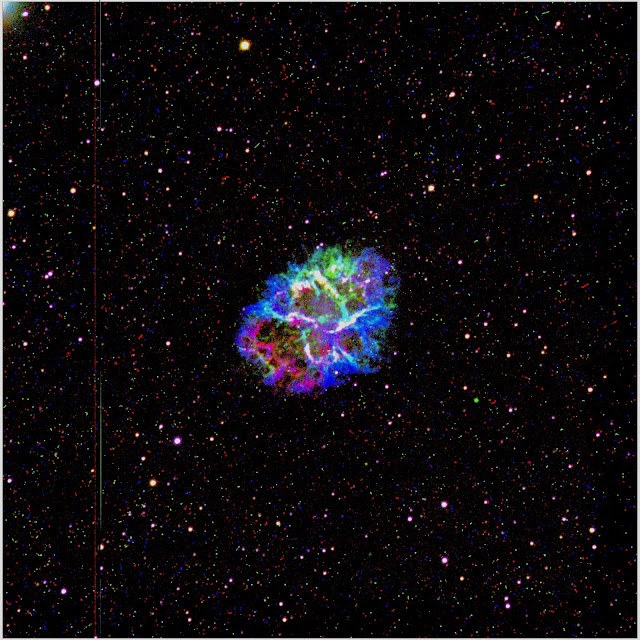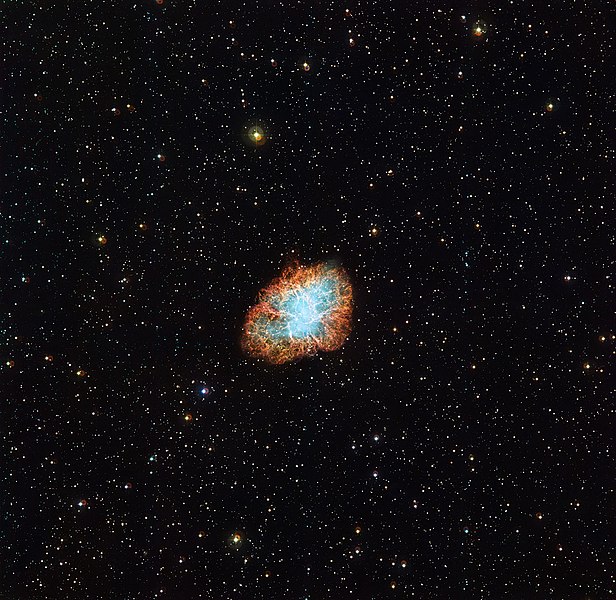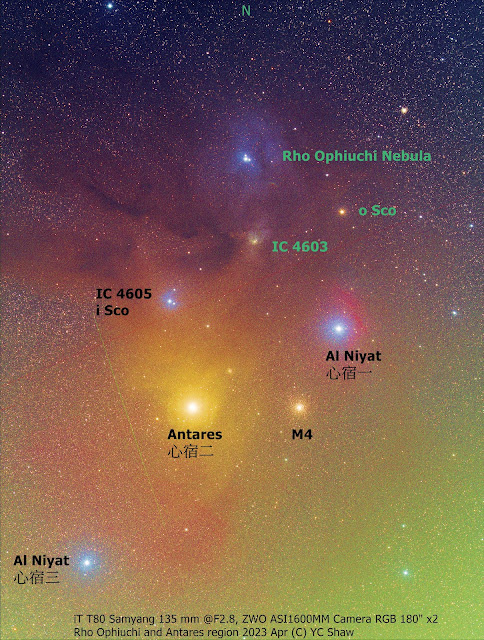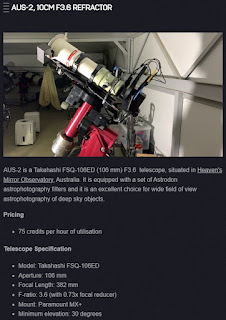Messier Marathon by Remote Telescopes (M1-M9)
梅西耶 馬拉松 之 遠端天文台 版本
Messier marathon is an attempt, usually organized by amateur astronomers, to find as many Messier objects as possible during one night. The Messier catalogue was compiled by French astronomer Charles Messier during the late 18th century and consists of 110 relatively bright deep-sky objects (galaxies, nebulae, and star clusters).
Since I don't have much time to participate a Messier Marathon, I had come to an idea that I hope to use remote telescopes to make astrophotographs for all the 110 Messier Objects in one or three years. I would like to call it:
Messier Marathon by Remote Telescopes
梅西耶 馬拉松 ( Messier Marathon ) 是在一夜內尋找到儘可能多,或儘可能完成全部110個梅西耶天體的活動。
https://zh.wikipedia.org/zh-tw/%E6%A2%85%E8%A5%BF%E7%88%BE%E9%A6%AC%E6%8B%89%E6%9D%BE
梅西耶目錄 是法國天文學家梅西耶在18世紀編輯的,總共有110個相對較明亮的深空天體(星系、星雲和星團)。
https://zh.wikipedia.org/wiki/%E6%A2%85%E8%A5%BF%E8%80%B6%E5%A4%A9%E4%BD%93%E5%88%97%E8%A1%A8
https://zh.wikipedia.org/wiki/%E6%A2%85%E8%A5%BF%E8%80%B6%E5%A4%A9%E9%AB%94
網路上的 遠端天文台,裡面設置 天文望遠鏡, 可以用網路遠端控制,做 天文攝影。
這種方案已經發展多年了,各種功能與介面也越來越純熟了。
遙控望遠鏡(遠端天文台) ( 草山星空 )
https://astrotracer.blogspot.com/2016/07/itelescope.html
我個人因為工作忙碌勞累,不容易參加實體的梅西耶馬拉松,於是就興起一個興趣,想用遠端天文台來拍攝梅西耶深空天體,希望可以在一年,或三年內完成全部110個梅西耶天體。
想稱之為:
梅西耶 馬拉松 之 遠端天文台 版本
預計使用 iTelescope 與 Telescope Live
https://www.itelescope.net/
https://telescope.live/home
** CCD 的 LRBG 或 HSO 原始影像 使用 DDS (2020年) 或 CCDStack 疊合 (2023年)
M1 Crab Nebula ( 蟹狀星雲 )
https://en.wikipedia.org/wiki/Crab_Nebula
The Crab Nebula is a supernova remnant and pulsar wind nebula in the constellation of Taurus.
https://www.nasa.gov/feature/goddard/2017/messier-1-the-crab-nebula
蟹狀星雲是位於金牛座ζ星東北面的一個超新星殘骸和脈衝風星雲,是銀河系英仙臂的一部分,距地球約6,500光年,直徑達11光年,並以每秒約1,500公里的速度膨脹。 該星雲由約翰·貝維斯於1731年發現,對應中國、阿拉伯和日本天文學家於公元1054年記錄的一次超新星爆發。 維基百科
expanding: https://www.astrobin.com/327338/0/ (膨脹 的 動圖)

iTelescope T21 Imaging: 2024-03-10 / Processing: 2024-03-10
RGB 180 sec
Telescope Live CHI-1-CCD Imaging: 2022-12-04 / Processing: 20230414
H-alpha 300 sec x 4
HSO 300 sec x 4 ( Hubble pallete )
CHI-1 Planewave CDK-24
Telescope Live SPA-2-CCD Imaging: 2021-11-06 / Processing: 20230430
H-alpha 600 sec x 2
HSO 600 sec x 2 ( Hubble pallete )
SPA-2
wiki Common CC::
https://commons.wikimedia.org/wiki/File:Wide_View_of_the_Crab_Nebula.jpg
NASA Gallery:
https://images.nasa.gov/details/GSFC_20171208_Archive_e002159
https://images.nasa.gov/details/GSFC_20171208_Archive_e000053
Hubble:https://hubblesite.org/contents/media/images/2020/03/4601-Image
M2 ( globular cluster ) 球狀星團
https://en.wikipedia.org/wiki/Messier_2
Messier 2 or M2 (also designated NGC 7089) is a globular cluster in the constellation Aquarius, five degrees north of the star Beta Aquarii. It was discovered by Jean-Dominique Maraldi in 1746, and is one of the largest known globular clusters.
M2或梅西耶2,也稱為NGC 7089,在虛宿一(寶瓶座β)北方5度,是位於寶瓶座的一個球狀星團。它是喬瓦尼·多梅尼科·馬拉迪在1746年發現的,是已知最大的球狀星團之一。
https://zh.wikipedia.org/zh-tw/M2_(%E7%90%83%E7%8B%80%E6%98%9F%E5%9C%98)

Telescope Live CHI-1 Planewave CDK24 (61-cm) QHY 600M Pro
M2 LRGB 300 sec x3 2023-06-21 (C) YC Shaw
CHI-1
M3 ( globular cluster ) 球狀星團
https://en.wikipedia.org/wiki/Messier_3
Messier 3 (M3; also NGC 5272) is a globular cluster of stars in the northern constellation of Canes Venatici.
https://zh.wikipedia.org/zh-tw/M3_(%E7%90%83%E7%8B%80%E6%98%9F%E5%9C%98)
M3(梅西耶3或NGC 5272)是在北天星座,獵犬座中的一個球狀星團。它在1764年5月3日被梅西耶發現[7],並且是他自己發現的第一個梅西耶天體。

T68 color ( 北方在右邊 ) ( North at Right )
2023-03-31 ( 農曆初十 ,月光較強,後面幾天就都拍 球狀星團 )
color 150 seconds 彩色 曝光 150秒 影像
color 150 sec x 4 彩色 曝光 150秒 影像 4張影像疊圖
T68
M4 globular cluster ( 球狀星團 )
https://en.wikipedia.org/wiki/Messier_4
Messier 4 or M4 (also designated NGC 6121) is a globular cluster in the constellation of Scorpius. It was discovered by Philippe Loys de Chéseaux in 1745 and catalogued by Charles Messier in 1764.
https://zh.wikipedia.org/zh-tw/M4_(%E7%90%83%E7%8B%80%E6%98%9F%E5%9C%98)
M4 or 梅西耶4(也稱為NGC 6121)是在天蠍座的一個球狀星團。它是Philippe Loys de Chéseaux在1745年發現,梅西耶在1764年將它收錄為梅西耶天體。這是第一個被分辨出單顆恆星的球狀星團。

Telescope Live CHI-1 2023-04-22 LRGB 300 sec x 4
CHI-1
iTelescope T80 ( wide field ) RGB 180 sec x 3
T80
Telescope Live AUS-2 ( wide field ) HSO 300 sec
AUS-2
M5 globular cluster ( 球狀星團 )
https://en.wikipedia.org/wiki/Messier_5
Messier 5 or M5 (also designated NGC 5904) is a globular cluster in the constellation Serpens. It was discovered by Gottfried Kirch in 1702.
https://zh.wikipedia.org/zh-tw/M5_(%E7%90%83%E7%8B%80%E6%98%9F%E5%9C%98)
M5(也稱為NGC 5904)是位於巨蛇座 的一個球狀星團,在1702年被戈特弗里德·基爾希發現。

2023-04-02 ( 農曆初十二 ,月光較強,後面幾天就都拍 球狀星團 )
iTelescope T68 color ( 北方在右邊 ) ( North at Right )
color 150 sec 彩色 曝光 150秒 影像
color 150 sec x 4 彩色 曝光 150秒 影像 4張影像疊圖
T68
M6 Butterfly Cluster ( 蝴蝶星團 )
https://en.wikipedia.org/wiki/Butterfly_Cluster
The Butterfly Cluster (cataloged as Messier 6 or M6, and as NGC 6405) is an open cluster of stars in the southern constellation of Scorpius. Its name derives from the vague resemblance of its shape to a butterfly.[5] The Trumpler classification of II 3 r[6] encodes it is rich in stars, ranks II out of IV for disparateness and greatly mixes bright with faint components. It is 3.5° to the northwest of Messier 7, both north of the tail of Scorpius
https://zh.wikipedia.org/zh-tw/%E8%9D%B4%E8%9D%B6%E6%98%9F%E5%9C%98
蝴蝶星團(也稱為梅西耶 6、M6、或NGC 6405)是位於南天星座天蠍座的一個疏散星團。它的名字源於它的形狀與一隻蝴蝶有幾分相似[5]。在川普勒分類法的類型是II 3 r[6]:r表示它有豐富的恆星,II意味著向中心集中的傾向,3則說明有少數恆星非常明亮,但多數恆星是黯淡的。它在托勒密星團(M7)西北方3.5°,而這兩個星團都在天蠍座的尾鉤的北方
Telescope Live CHI-1 Planewave CDK24 (61-cm) QHY 600M Pro
M6 LRGB 600 sec x3 2022-06-06 2023-07-01 (C) YC Shaw
CHI-1
Telescope Live Takahashi FSQ-106ED (106 mm) F3.6 QHY 600M Pro
M6 SH2 12 wide filed HSO 600 sec x2 2022-08-31 2023-06-21 (C) YC Shaw
Telescope Live Takahashi FSQ-106ED (106 mm) F3.6 QHY 600M Pro
M6 SH2 12 wide filed SHO Hubble pallete 600 sec x2 2022-08-31 2023-06-21 (C) YC Shaw
AUS-2
















































































